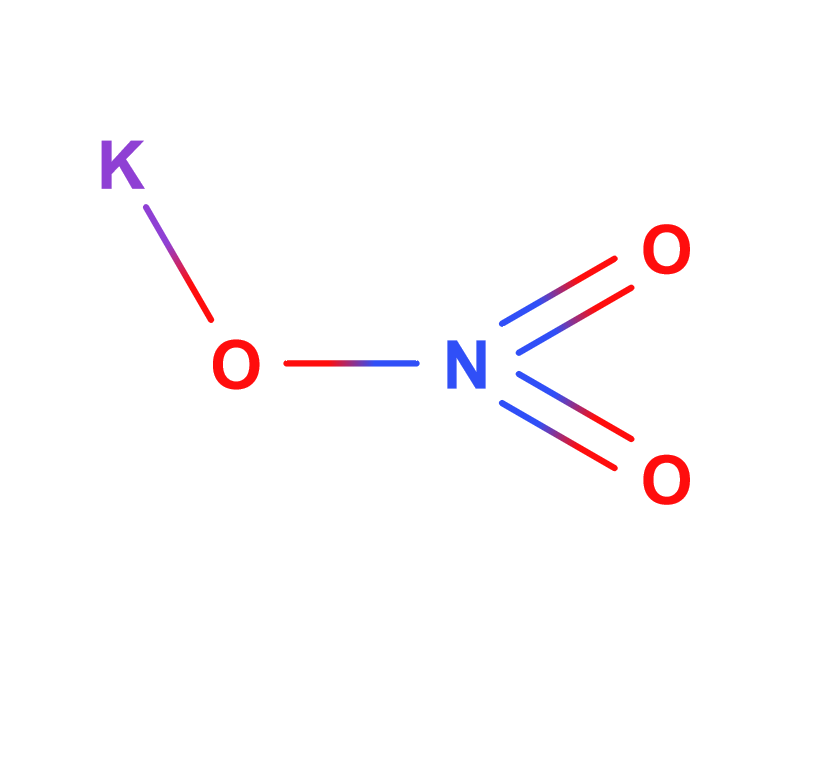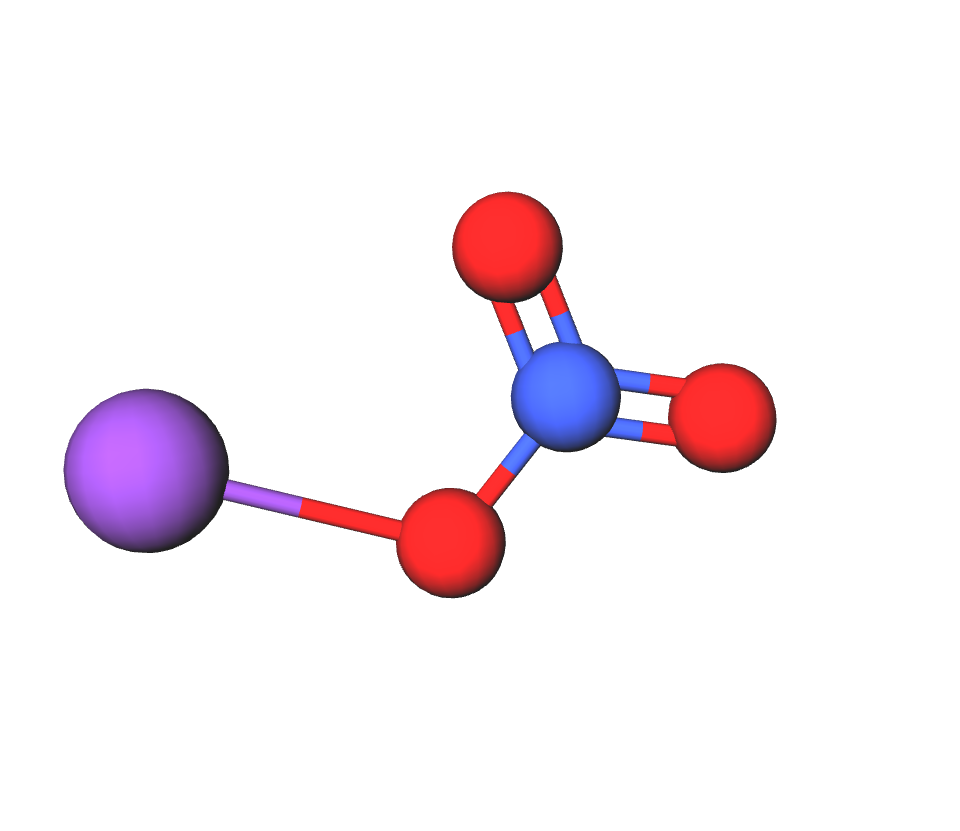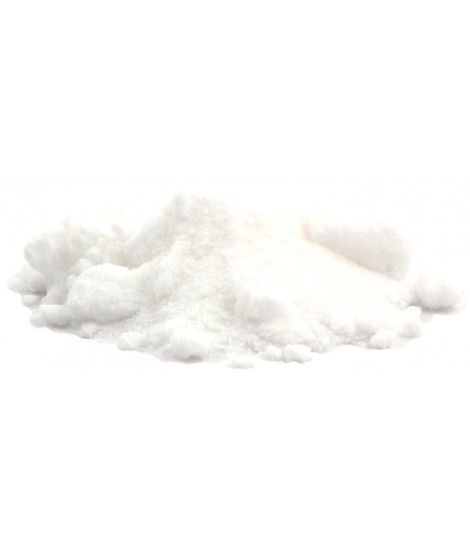POTASSIUM NITRATE (tech grade) 99%, kg
4.39 €
Potassium nitrate, CAS 7757-79-1, potash nitrate, potash saltpeter, INCI POTASSIUM NITRATE, saltpeter, saltpetre, nitrate of potash.
Parameter | Attribute | |
Potassium nitrate | saltpeter, saltpetre, nitrate of potash, monopotassium nitrate, nitrate potassium salt | |
Formula | KNO3 | |
Structure |   | |
IUPAC | Potassium nitrate | |
INCI | POTASSIUM NITRATE | |
CAS | 7757-79-1 | |
Molar mass | 101,1032 g/mol | |
Density | 2,109 g/cm3 | |
Solubility | In water: 133 g/L (0 °C) 316 g/L (20 °C) 383 g/L (25 °C) 2439 g/L (100 °C) | Slightly soluble in alcohol, soluble in glycerin, ammonia water |
Potassium nitrate is a chemical compound with the chemical formula KNO3. It is the ionic salt of the potassium ion K+ and the nitrate ion NO3- and is therefore an alkali metal nitrate. Potassium nitrate is widely used, mainly as a source of potassium and nitrate nitrogen or as an oxidant (source of oxygen).
In agriculture, potassium nitrate is used in fertilizers as a source of nitrogen and potassium - two macronutrients for plants at the same time. When used in its pure form, it has an NPK value of 13-0-44. Concentrated potassium fertilizer is particularly valuable as a supplementary fertilizer for plants. Cucumbers, tomatoes and root crops use a lot of potassium during their most intense growth. Potassium saltpeter contains as much as 46% potassium and is rapidly absorbed by plants. K20 - 46%, N - 13.5%. Recommended fertilizer rate per 10m2:
Lettuce, radishes, beans, peas 90-180 g
Onions, leeks, dill, radishes 180-290 g
Cauliflowers, cucumbers, courgettes, tomatoes 290-360 g
Cabbage, beetroot, carrots, celery 360-450 g
In pyrotechnics, potassium nitrate is used as the main raw material for the production of black powder. Black powder is nowadays used for shooting antique guns and for making model rockets with gunpowder engines (rocket lollipop). The traditional sugar propellant formula is usually prepared in a 65:35 (13:7) potassium nitrate to fuel ratio. Sugar, sorbitol, xylitol, dextrose, etc.) Burning time up to 128s. Potassium nitrate can also be used as a raw material for smoke screens (smoke bombs). In some cases, it can be used to produce cold fires (potassium nitrate, icing sugar, aluminum powder, iron filings). It is also added to cigarettes to maintain an even burn of the tobacco and is used to ensure the complete combustion of paper cartridges for artillery shells and ball revolvers.
In the food industry, potassium nitrate is still used in some foods such as salami, dry-cured ham, baked goods and (in some countries) in the brine used to make corned beef (sometimes in combination with sodium nitrite). In West African cuisine, potassium nitrate (salpetre) is widely used as a thickener in soups and stews such as okra soup and isi ewu. It is also used to soften food and to reduce cooking time when cooking beans and tough meats. Saltpetre is also an essential ingredient in the preparation of special porridges such as kunun kanwa, literally translated from the Hausa as 'saltpetre porridge'. In the Shetland Islands (UK) it is used in the preservation of mutton to produce reestit mutton, a local delicacy.
In cosmetics, potassium nitrate is used in toothpastes to treat sensitive teeth. Historically used to treat asthma. Used in some toothpastes to relieve asthma symptoms. It has a cosmetic effect on the oral cavity (cleansing, deodorization and protection) and acts as a soothing agent: it helps to relieve discomfort on the skin or scalp. Commonly found in concentrations up to 0.1% of the cosmetic weight, up to 5.89% in adult toothpaste. Its functions (INCI):
- Oral care/hygiene agent : Provides cosmetic effects to the oral cavity (cleaning, deodorization and protection)
- Soothing : Helps to reduce the skin or scalp discomfort
In medicine, potassium nitrate is used as the main ingredient in kidney tablets to relieve symptoms of cystitis, pyelitis and urethritis. It combats high blood pressure and was once used as a remedy for hypotension. Due to its high potassium content, it helps to quickly restore electrolyte balance and improve heart function.
In the cleaning industry, potassium nitrate is used as a key component in the cleaning of aluminum surfaces and to avoid damaging them. It can also be used as an ingredient in aluminum cleaning pastes.
In horticulture, potash nitrate is a component of some tree stump removal products (typically about 98%). It accelerates the natural decomposition of the stump by supplying nitrogen to fungi that decompose the stump wood.
In metalworking, potassium nitrate is used in the heat treatment of metals as a medium-temperature molten salt bath, usually in combination with sodium nitrite. A similar bath is used for the durable blue/black finish normally seen on firearms. Its oxidizing quality, water solubility and low cost make it an ideal short-term rust inhibitor.
In firefighting systems, the main use of KNO3 is as an active ingredient in condensed aerosol firefighting systems. When the fire burns, potassium carbonate is formed, which is deposited on surfaces and forms a porous structure, thus preventing oxygen from reaching combustible surfaces. This prevents the spread of fire and the flammability of combustible surfaces.
In school experiments, potassium nitrate is used as a reference in the nitrate experiment. It is also used in combustion tests to calculate accurately the amounts of oxidant and reductant in the presence of impure materials. In some cases it is used in black powder, colored smoke (by adding colored crayons to a mixture of potassium nitrate and icing sugar) or gunpowder rocket tests.
Important: Add the item to your basket, fill in the recipient's details and confirm your order. Thank you!
To save your precious time, we will deliver your order to your address at a time convenient for You!
*- Pictures of the goods may not reflect the actual appearance, color, assembly or shape of the goods and their packaging. The information in the product description is general and may not correspond to the information on the packaging of the product and may not be accurate as to the use of the product. The information given on the stocks and prices of goods may, in certain cases, differ from the actual prices and stocks of goods
Signal word: Warning |
Hazard icons:
|
Danger phrases: H272 May increase the risk of fire, oxidizer |
Precautionary statements: P210 Keep away from naked flames and hot surfaces. Do not smoke. P220 Keep away from flammable materials. |
Related products
(8 other products in the same category)











